More Photos: Last night's moon
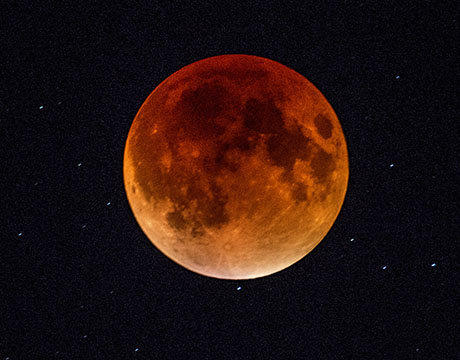
From Jim Burns.
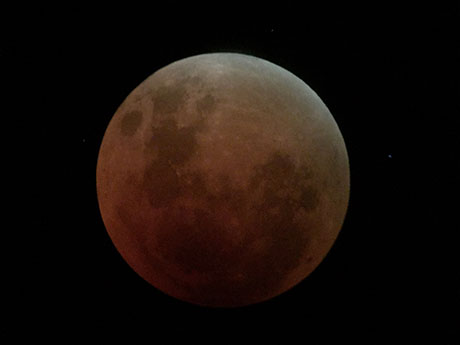
From Michelle Caballero.

From Jim Burns.

From Michelle Caballero.
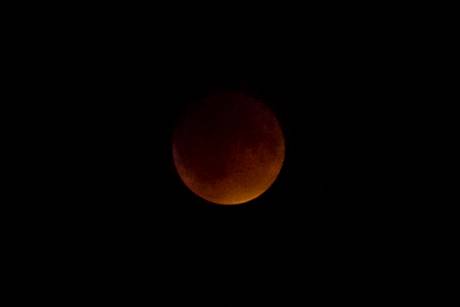
Shot at 10:48 p.m., ISO 12,500, 1/160 f2.8
The shots below taken at various settings over the course of the eclipse's progression. Shooting at 200mm and then cropping tightly in Lightroom.


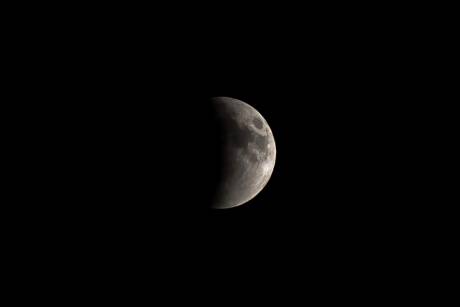
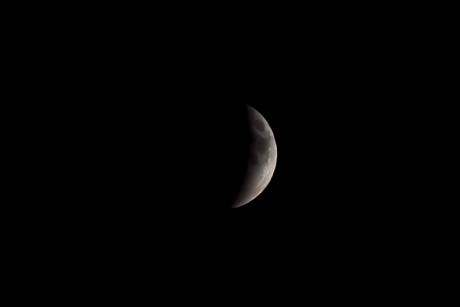
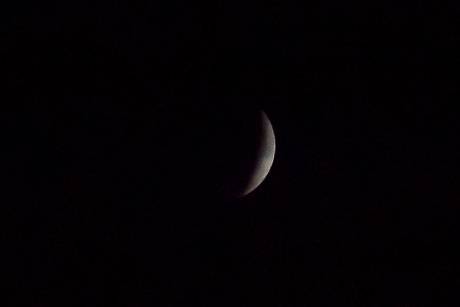
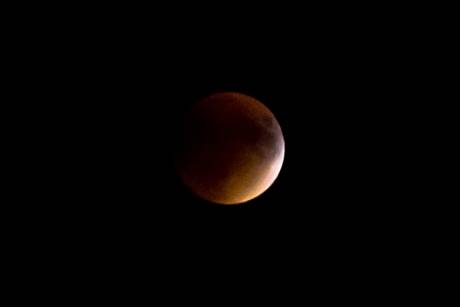
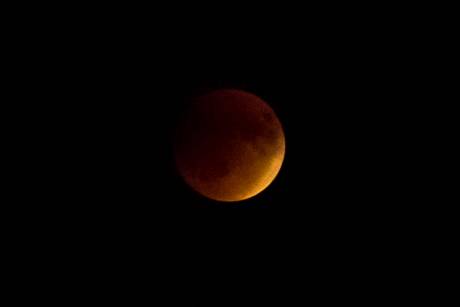
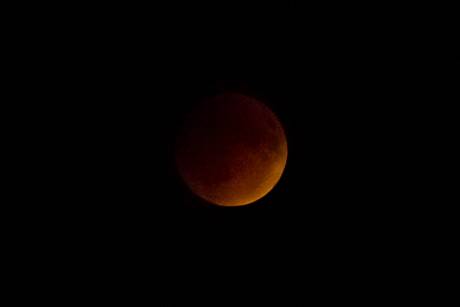
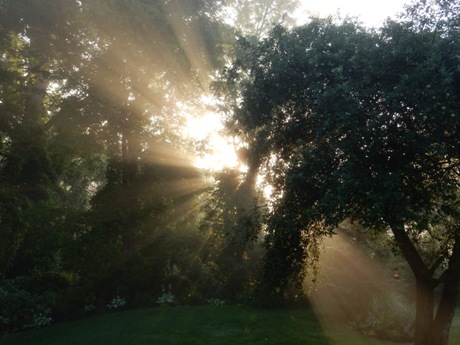
There's plenty to be said for rising early. In the above photo, rays of sunlight permeate our yard as the sun begins its ascent.
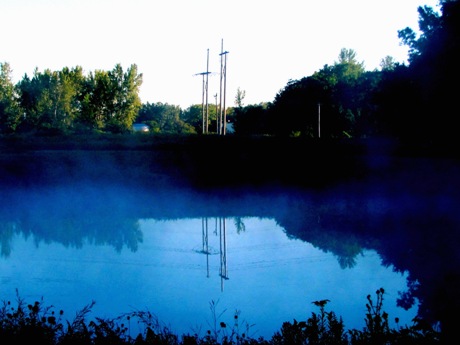
The calm of early morning provides a mirror image on a placid surface.
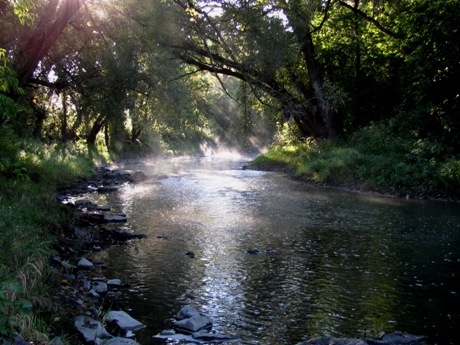
Mist rises from a stretch of Tonawanda Creek. Regardless the time of day, this is always a nice spot to take photos as little light penetrates the treetop canopy.
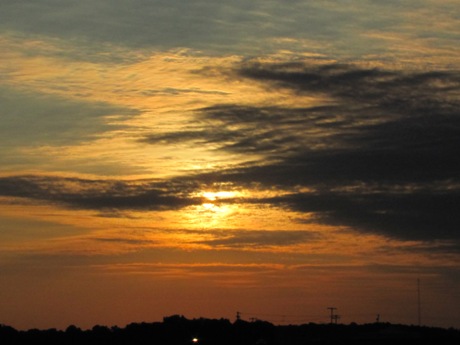
Gathering clouds have a filtering effect and cast a pale-orange glow on the horizon.
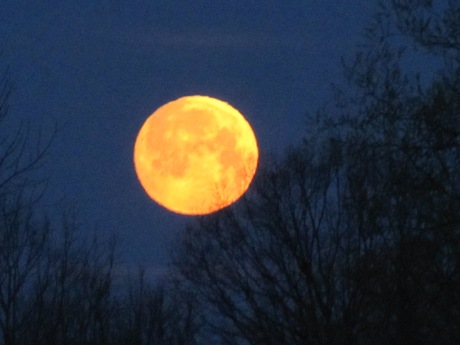
The full moon looms large immediately after rising...........
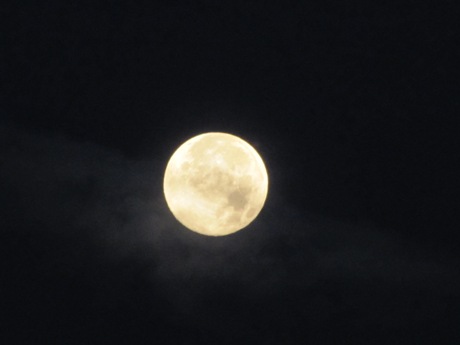
but not until the full moon climbs high in the night sky are we bathed in soft lunar light and moon shadows.

Pictures submitted by Dylan Brew of of a hummingbird clearwing moth spotted in Alexander.
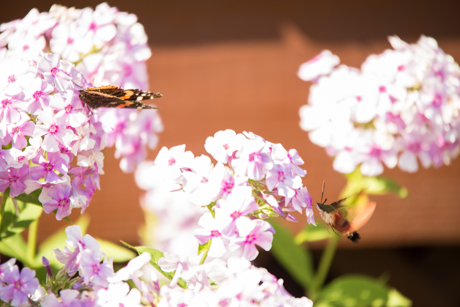
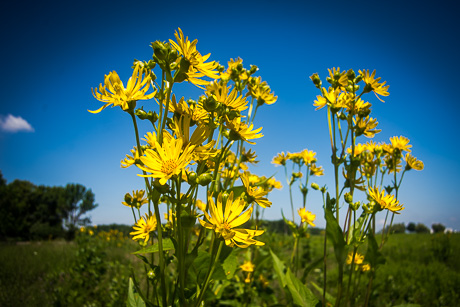
There's a nice patch of yellow daisies that have popped up in a field near the intersection of Judge Road and Alleghany Road, Alabama.

Murph and Charlie were on their way to dig tunnels in the flower bed when Murph spotted trouble approaching from the rough growth at the edge of the yard. "Uh-oh -- look who's back," he said. "Do ya think two of us can handle 'im?" asked Charlie. "No way -- he didn't get that big eatin' just bugs," Murph said.

Slinking through the rough that bordered the lawn was a slithering nemesis who had time and again menaced the local chipmunks. Having spotted his potential quarry, the sinister creature mused to himself, "Isthmus be my lucky day! Little fur balls! Boy oh boy! This should be a piece of cake!"

"Listen," whispered Murph to Charlie, "we're gonna need help. Go fetch the Muldoon brothers -- they always enjoy a good scrap -- and be quick about it."
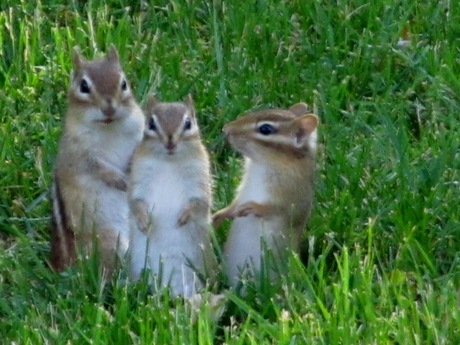
"Hey Seamus, Rory, we need your help -- the snake is back!" As expected, the Muldoon bros pledged their support, no questions asked.

"Count us in" chorused the Frawley clan, sensing the excitement and eager to join the fray.
With reinforcements on the way, Murph is temporarily on his own when he comes face to face with the adversary.......
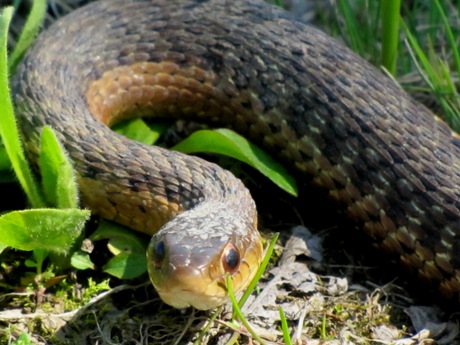
"Hello there, my little furry and tasty friend.......why don't you come a little closer, hmmm?" No sooner had the sinister menace lisped those words when he heard approaching movement in the grass.
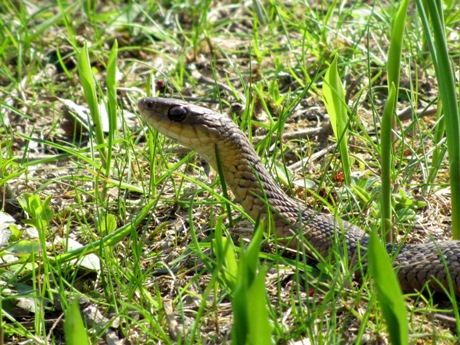
Raising his head to better scope out the situation, the slithering reptilian suddenly sees the potential for a one-sided melee, and the odds are no longer in his favor.

Subtle, stealthful, and none too foolish, the serpent retreats to the rough from whence he came. As for the chipmunks, they went happily about their business of once again making holes in the lawn and flower bed.
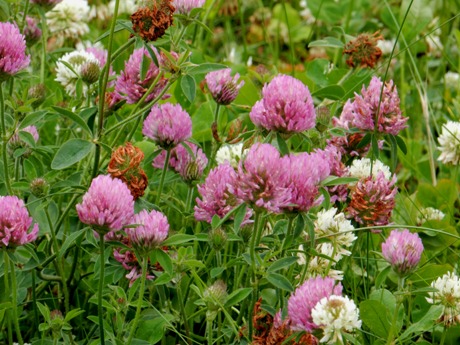
Whether one views them as weeds or wildflowers, they are colorful nonetheless and for the past month or more they have pleasantly tinted the roadsides of Genesee County. The red clover pictured above was one of the more prolific plants springing up along country roads, in some cases clusters of the red bud could be measured in acres. Said to be a good source of vitamin C, chromium, magnesium, niacin, potassium and more, fresh buds are great in a salad, while dried they are used to make tea.
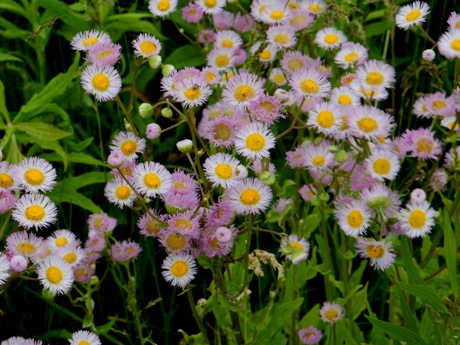
Daisy fleabane -- when dried -- was once believed to rid a household of fleas.
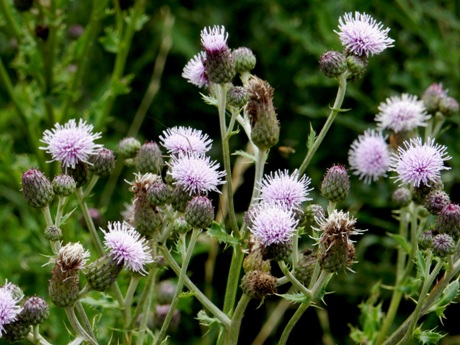
Canada thistle resembles a miniature version of bull thistle but its bud is not nearly as colorful as the magenta flower of the bull thistle.
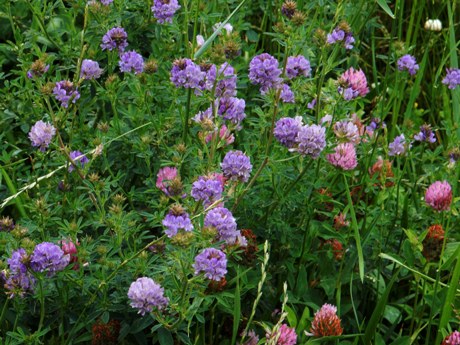
Crown vetch interspersed with red clover.
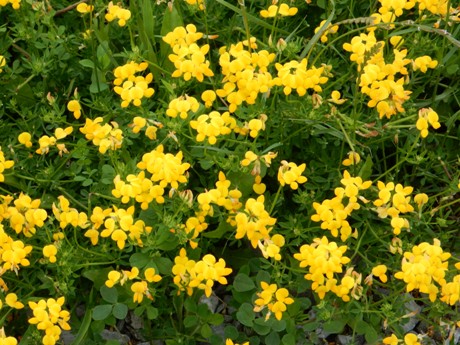
Wood sorrel
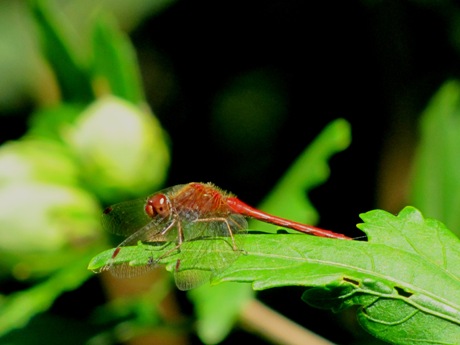
A streak-winged red skimmer rests atop a Rose of Sharon leaf. A couple summers back my grandson Joshua and I came across a large spiderweb with three of these dragonflies wrapped up cocoon-style and set aside for a meal at a later date. Joshua wasn't real happy about that -- he likes dragonflies. Come to think of it, he likes all bugs, period!
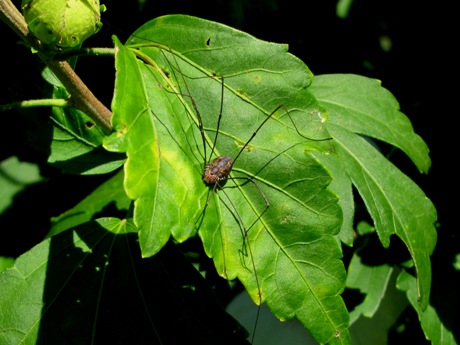
This daddy long legs, aka "harvestman," also decided to scour the Rose of Sharon leaves for a meal.
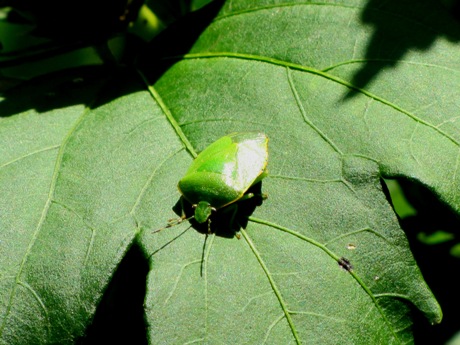
It must have been good hunting -- this green stinkbug wasn't about to pass up a meal.
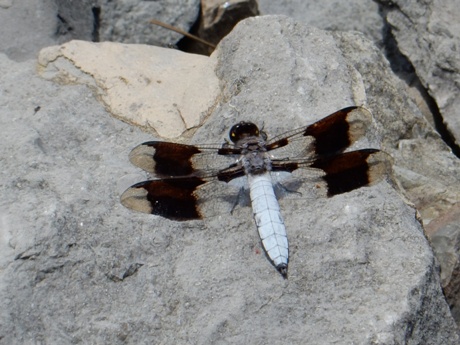
A white tail dragonfly rests atop a riprap embankment.
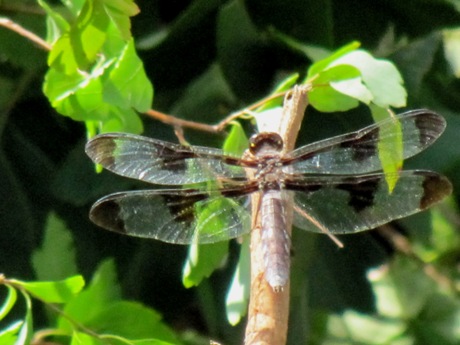
The translucence of a dragonfly's gossamer-like wings is evident on this Twelve-spotted Skimmer.
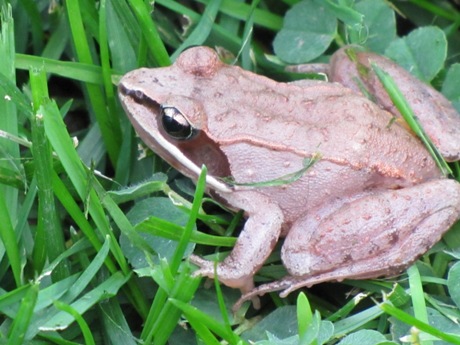
The wood frog is actually not so much a creature of summer -- he just happened to show up while I was mowing the lawn. Along with the spring peeper, the wood frog is one of the first amphibians to make its presence known in the early spring when it makes its way to vernal pools to procreate.
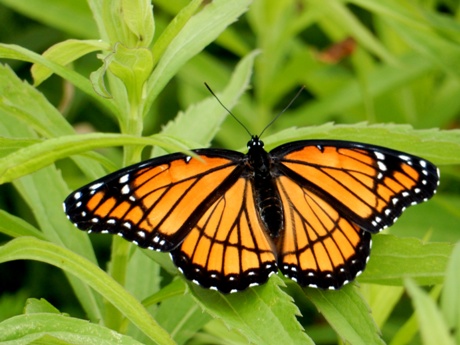
The Viceroy, pictured above, is nearly identical to the Monarch butterfly. Because the Viceroy so closely resembles the Monarch, which contain a toxin that is poisonous to birds and certain other predators, birds will thus avoid Viceroys...but only if it has previously sampled a Monarch -- otherwise it will readily make a meal of the Viceroy.

Donning her "summer reds," a doe casts a wary eye in my direction.
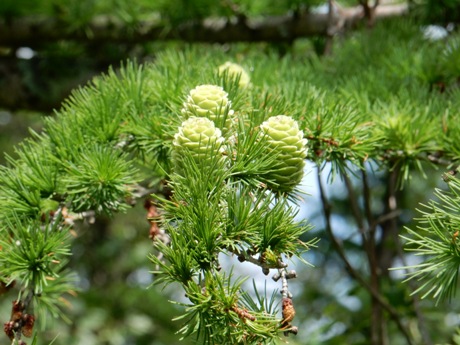
Early season larch cones.
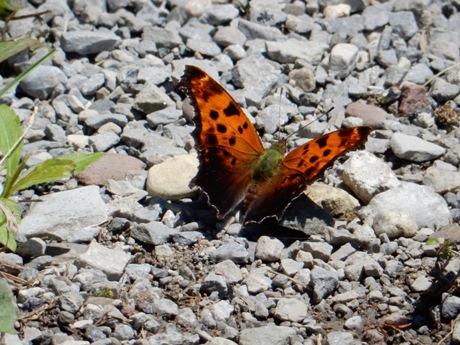
This butterfly is called a Question Mark -- honest! Taking nature photos is something Claudia and I enjoy. Identifying a species is satisfying in itself even if it leaves you wondering. I have no idea how the Question Mark got its name.
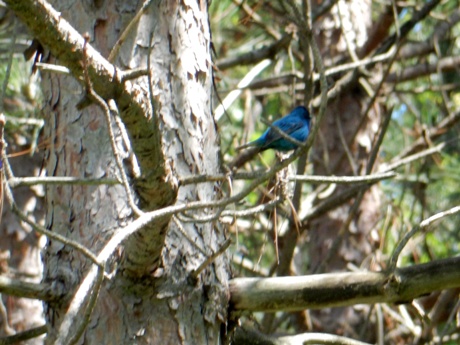
An Indigo bunting perched in the pines.
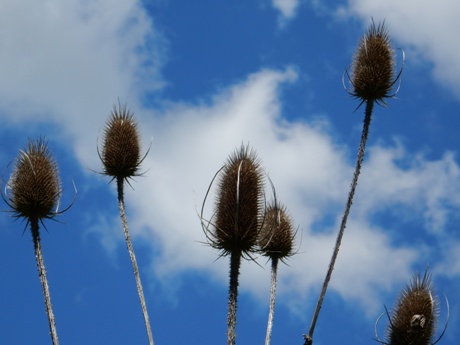
The remains of last year's teasel.
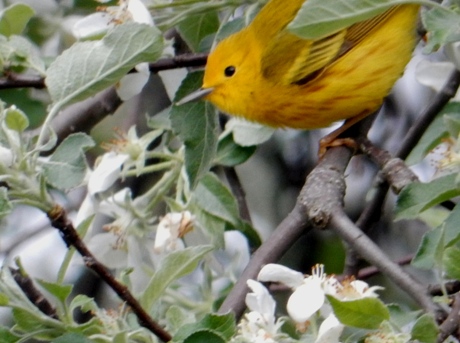
When our apple tree blossoms we're assured of seeing a variety of songbirds. Most years see plenty of "return customers," but every so often we're blessed with a "newcomer," like the yellow warbler pictured above.
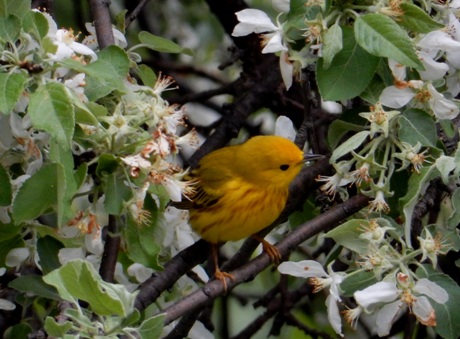
In past years I've seen the yellow warbler in good numbers while canoeing Oak Orchard Creek where it flows through the Alabama Swamp. This is the first time we've seen them in our yard. And like every other species that shows up in the apple tree, they've come to feed on the insects found in the apple blossoms.
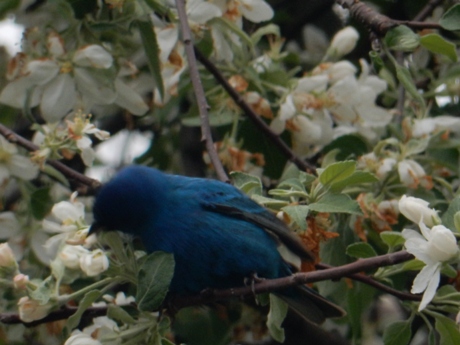
An Indigo bunting probes the blossoms for a meal.
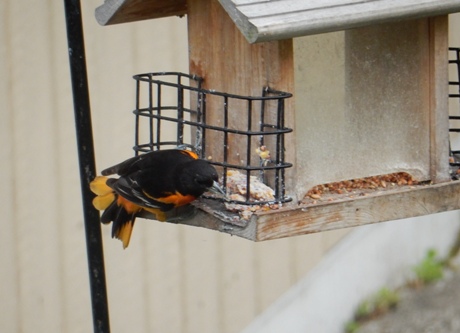
An oriole samples what's left of the suet.
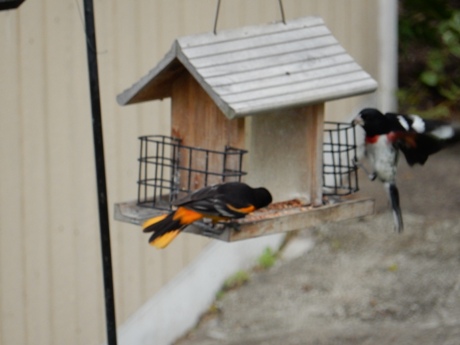
A rose-breasted grosbeak interrupts the oriole's dinner.
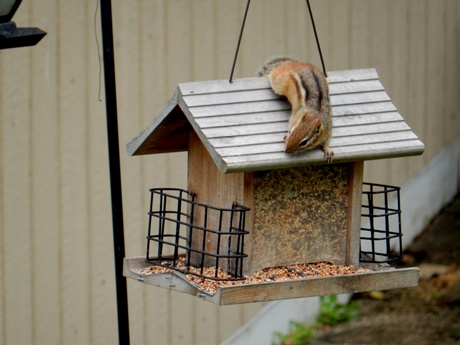
Then there was the unexpected visitor at the feeder who had scaled the shepherd's hook and jumped onto the feeder.
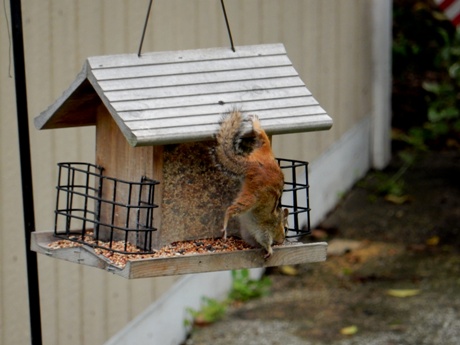
He precariously worked his way downward...note how he's clinging by one paw!
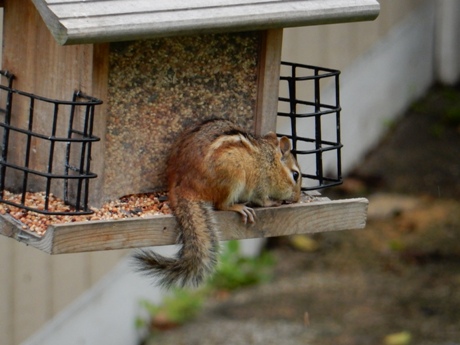
Having settled in, he proceeds to stuff himself.

Hardly the mental image conjured whenever one hears the word marsh, Ringneck Marsh has greened up considerably in recent weeks.
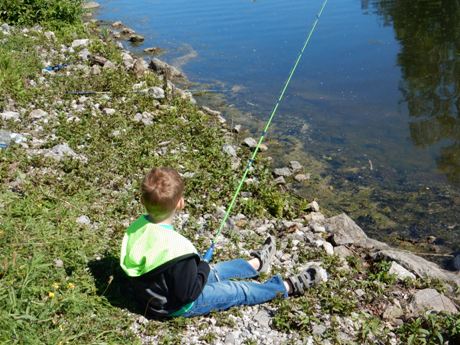
A young angler tries his luck from the shoreline...........
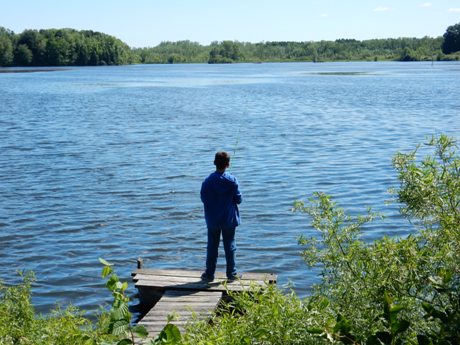
while his brother fishes from the dock. Part of Iroquois National Wildlife Refuge, Ringneck Marsh is home to northern pike, largemouth bass and panfish.
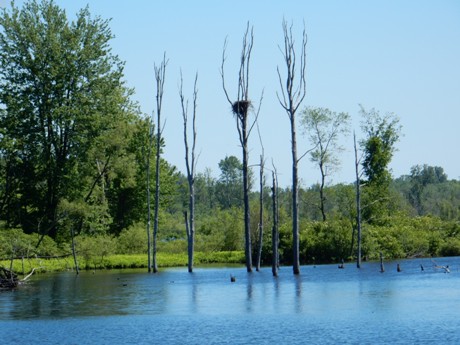
A variety of furbearers and birdlife also call Ringneck home. An osprey nest is seen in the above photo ......
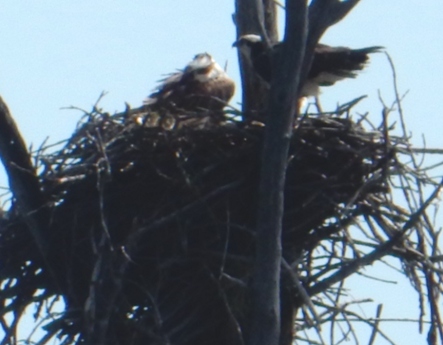
and a pair of adults tending to the nests occupants. To give you an idea of how big this stick nest is, an osprey is a large fish-eating bird with a massive wingspan -- perched atop this nest they look pigeon-sized. For much of the morning this pair alternated between visiting the nest and soaring high above the marsh.
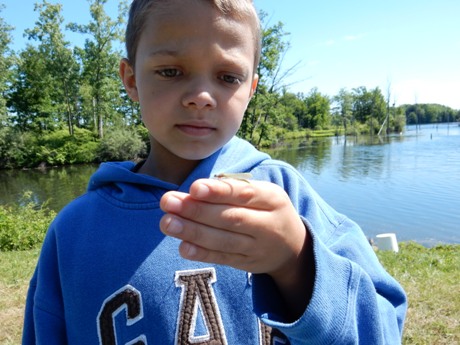
Discovery! When the fish failed to cooperate, this young angler took to exploring among the shoreline rocks and was rewarded for his efforts.
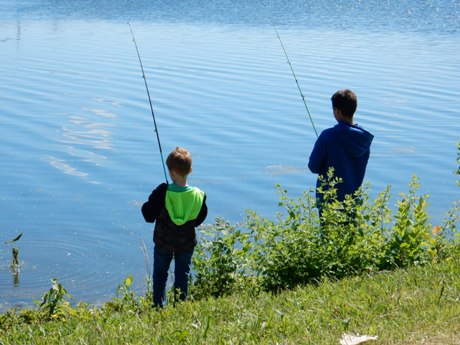
These fellas stuck it out a bit longer.....then joined their brother exploring the shoreline and searching for frogs, snakes and aquatic bugs.
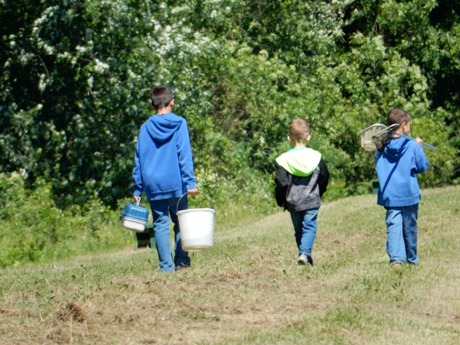
Calling it a day!
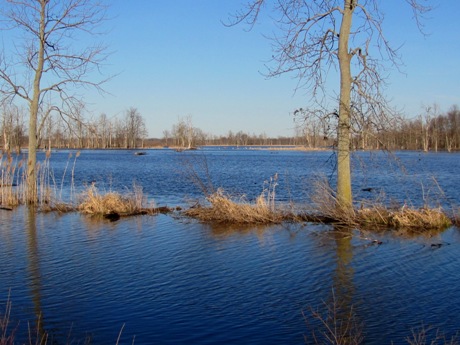
This is a what Mohawk Pool looked like when Claudia and I took our first hike at Iroquois National Wildlife Refuge this year. It was April and cattails were brown and trees devoid of foliage.
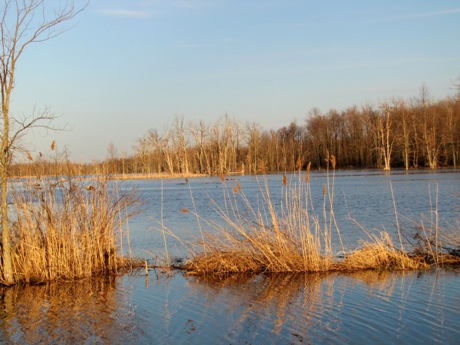
Later in the day the surface of Mohawk Pool reflected less sky while the early evening sun cast a glow on surrounding flora.
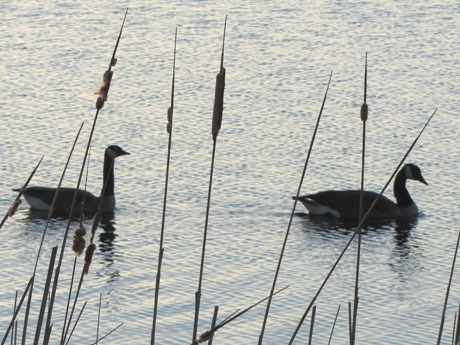
A pair of Canada geese swim slowly past.
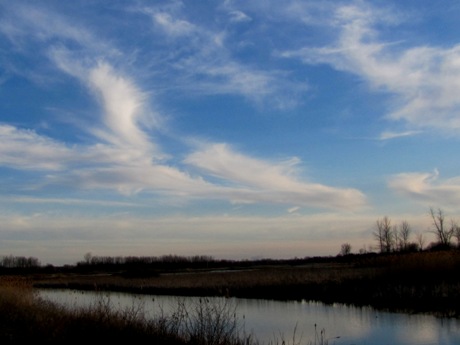
Dusk along Feeder Road.
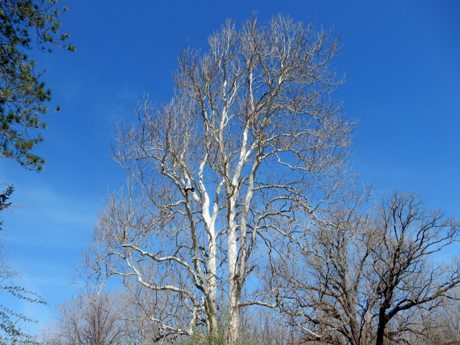
A towering sycamore stands out in contrast against a blue sky.

A classic mallard photo....irridescent green head as vivid as could be, and a leg band to boot. Bands provide valuable data for wildlife biologists. Nice photo, Claudia!

A great blue heron stalking its next meal.

Companions for life.

This photo of black-crowned night heron was taken by Claudia along the Feeder Ditch on the Tonawanda Wildlife Management Area. The Tonawanda WMA borders the western perimeter of the Iroquois National Wildlife Refuge while Oak Orchard Wildlife Management Area lies to the east. Together they compromise more than 19,000 acres of wildlife habitat that beckons to the springtime outdoor enthusiast, be it hiking, bird watching or nature photography. And so it was that Claudia and I spent several days this spring partaking of all three activities at the three locations.
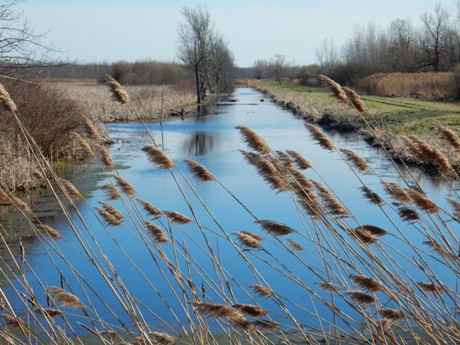
Our takeoff point for Tonawanda WMA -- facing west on the Feeder ditch.
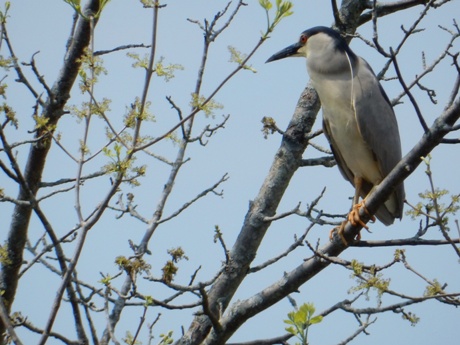
The black-crowned night heron was hidden from our view by tall reeds as it stalked the shallows. Finally aware of our presence it made quite ruckus as it took flight, emitting several loud guttural squawks, literally one after the other.
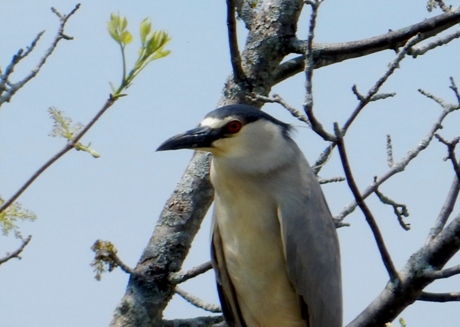
Hard to say who was more startled, my wife and I or the heron. Anyway, as disturbed as it seemed to be, we were surprised when the heron alit in a tree and allowed us to take its picture.
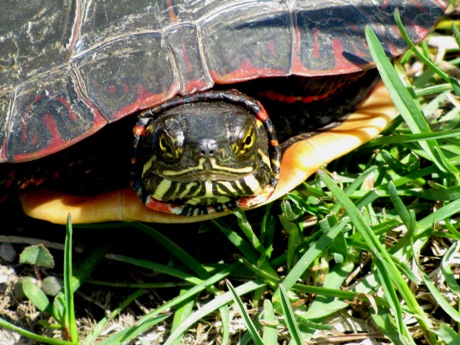
It's that time of year when female turtles are making their annual trek to deposit eggs. This gal doesn't look so pleased with the delay, does she?

I really enjoy wild mustard greens and having come across an abundance of it atop one of the berms, the day's hike turned out to be a bit longer than planned.
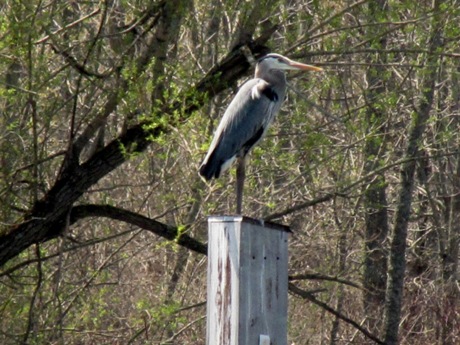
A great blue heron perched atop wood duck nesting box
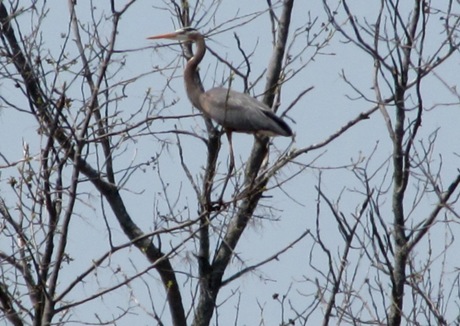
A great blue heron perched in the tree tops.....saw more blue herons on this day than ever before, most of which were on the wing.
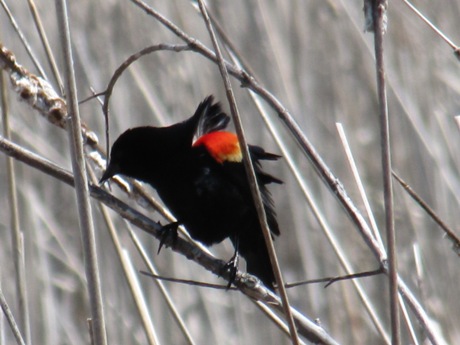
A gust of wind reveals a red-winged blackbird's scarpular

To be sure, there is quite a history behind what the locals refer to as, "the Feeder Ditch."
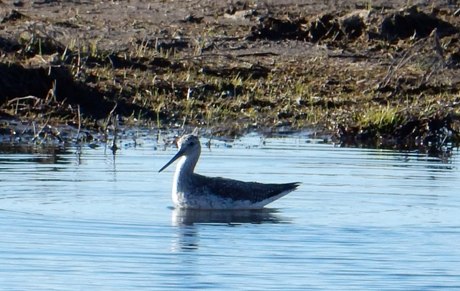
Hard to say for certain whether this yellowlegs is of the "greater" or "lesser" variety. Both are quite similar in appearance and, as you might have guessed, the long bill is perhaps the first thing you notice about this migrating shorebird -- at least in this photo.
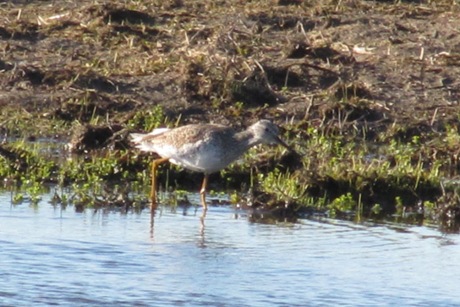
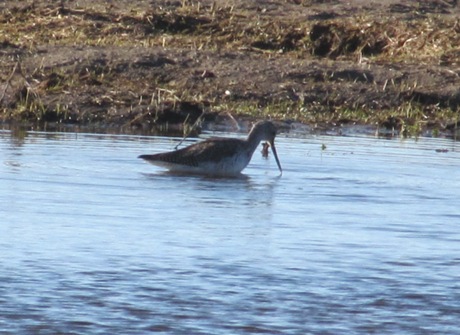
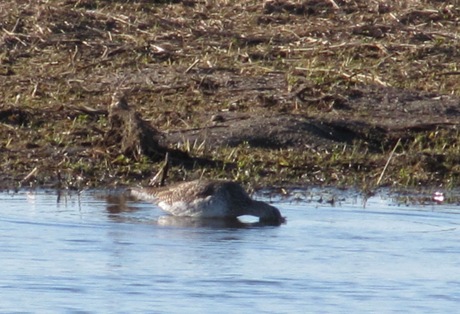
Here the yellowlegs uses its bill to probe for food, moving it back and forth to stir up the silty bottom and in the process locate snails and other aquatic morsels.
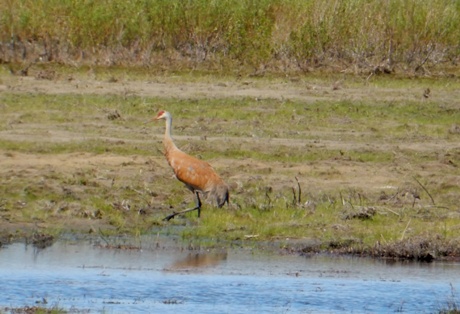
A sandhill crane makes a rare appearance along the Feeder Road at Iroquois National Wildlife Refuge.
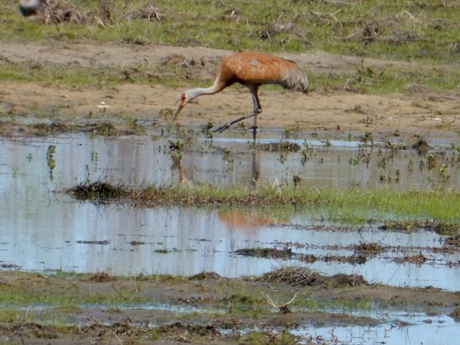
According to the "Audubon Field Guide to BIrds," there are isolated populations scattered in places like the Rocky Mountains and northern prairies, the majority of sandhill breeding takes place in regions throughout Siberia and across the Canadian arctic.
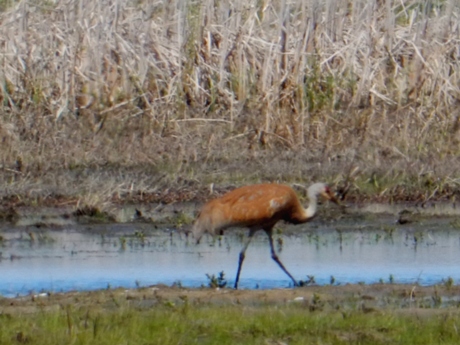
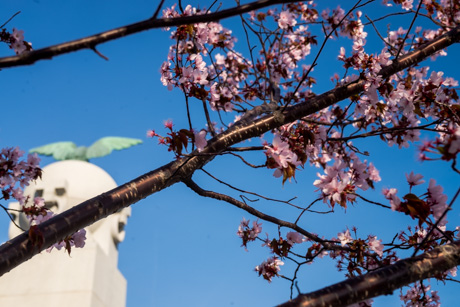
Upton Monument
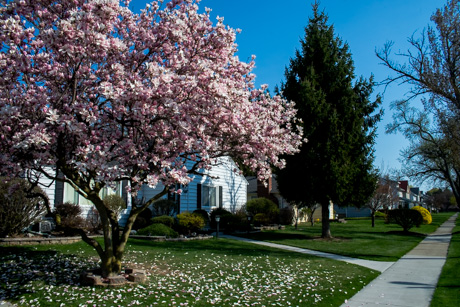
Redfield Parkway
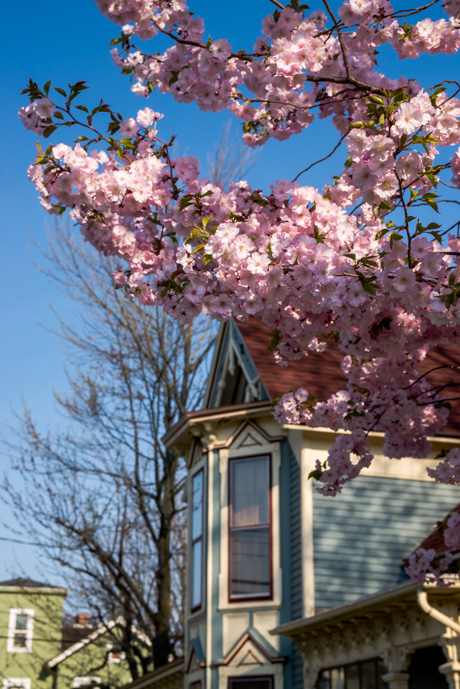
Washington Avenue
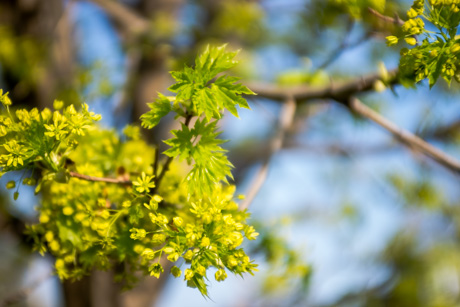
Washington Avenue
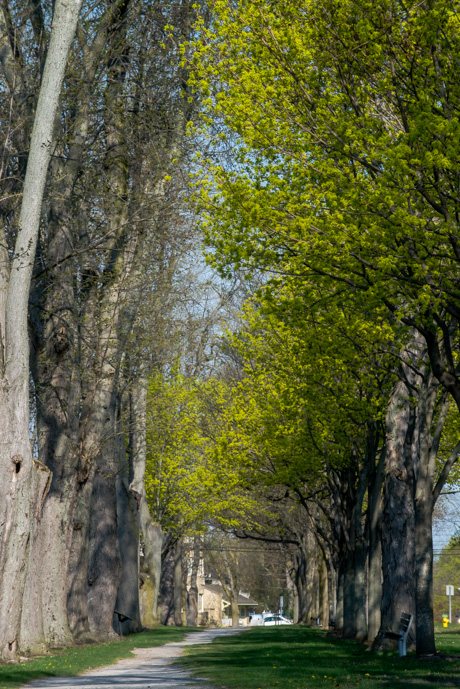
Centennial Park

State Street
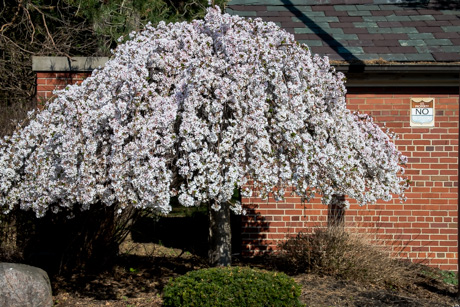
VA Center
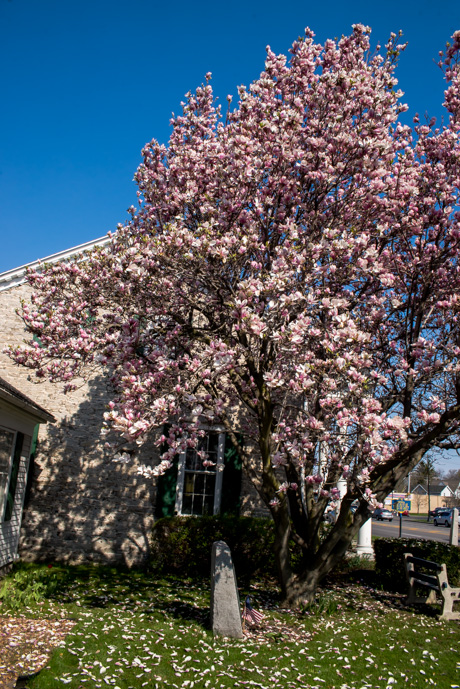
Holland Land Office Museum

Seconds before I snapped this photo, the red-tailed hawk pictured above was perched on a tree limb. And that's usually where it's situated whenever I've set foot into its domain. From its lofty vantage point it can detect movement in the goldenrod field, the grassy meadow or the swale.
But no matter where it's perched, whether it be in the big oak tree or an adjacent cottonwood, whenever I enter his hunting ground the red-tail immediately takes wing, giving me a wide berth and soaring high overhead in ever-widening circles that take it in the opposite direction before eventually disappearing over a distant woodlot.
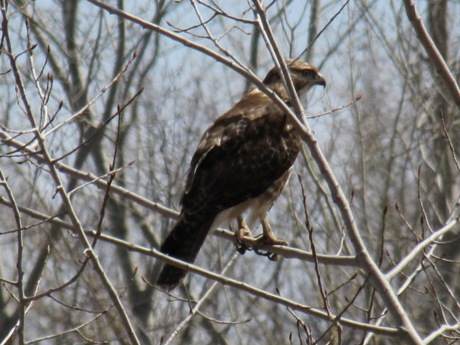
But on this day it showed no sign of alarm as I approached. Instead of paying me any mind, it seemed preoccupied with a potential meal.
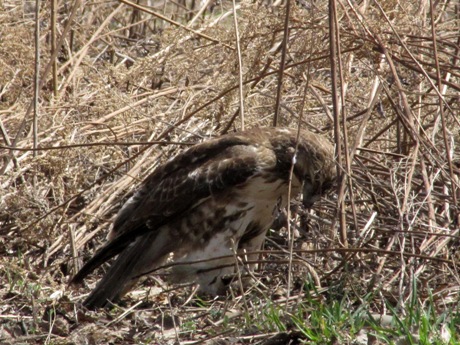
In the blink of an eye the hawk departed its perch and was on the ground investigating its intended prey. It turned out to be a snake slithering beneath the remains of last year's goldenrod.
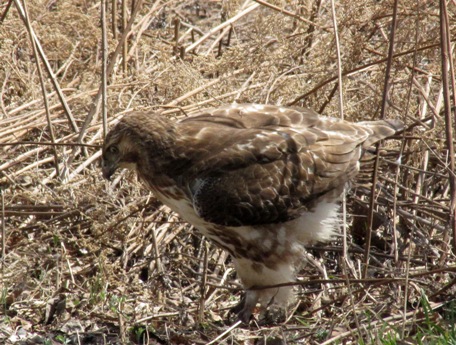
The snake is an unwilling participant, making a hard right in its attempt to elude the hawk.
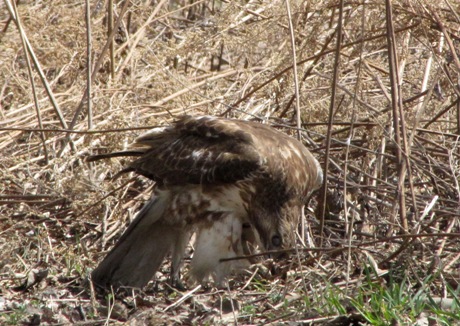
Finally, the red-tail lowers its head to the ground to administer the coup de grace.

The snake minus its head is protruding from the left side of the red-tail's razor-sharp bill...
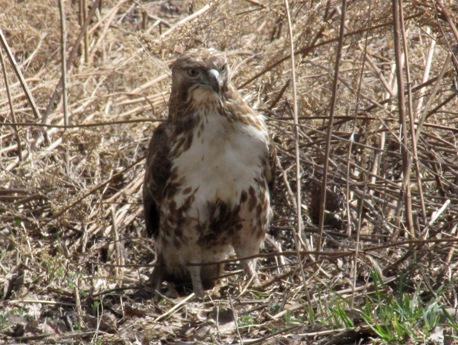
while a smaller portion dangles from the right side.
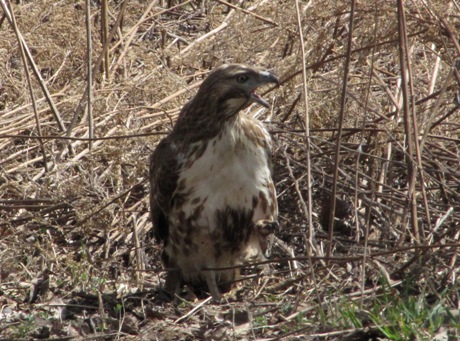
Apparently even swallowing a dead snake is no cakewalk for a raptor. The red-tail did this several times, twice with its head tilted back and at the time it looked as though it was gargling -- I'm guessing he was giving his dinner a bit of prompting on its way "down the hatch."
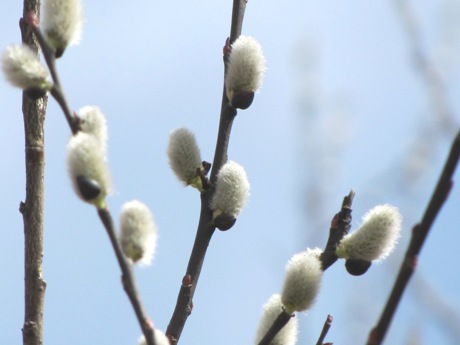
Pussy willow, one of the earliest harbingers of springtime and perhaps the most short-lived. Within a couple days the catkins will turn yellow and flowery in appearance.

Oxbow marsh on Oak Orchard Wildlife Management Area. A stopover for both migrating and nesting waterfowl.
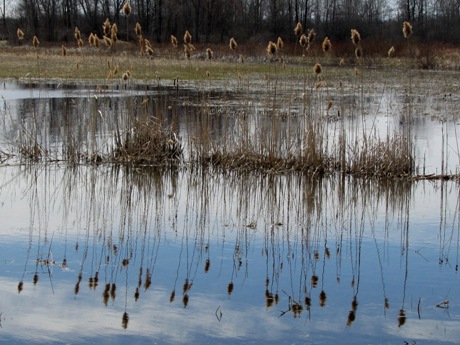
Phragmite reflections on the surface of a vernal pool. How long the water lasts here depends on the seasonal rainfall. But the creatures whose procreation depends on such a pool are great barometers and get things under way accordingly. Wood frogs, spring peepers and salamanders are among the visitors who come here to breed.

A late afternoon sun illuminates the trees along Oak Orchard creek on a calm spring evening. Though placid-looking, the water level is presently well above normal as is the current.
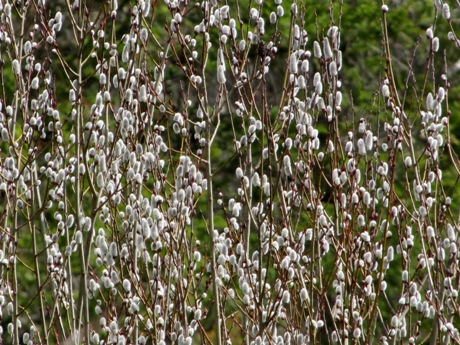
Pussy willow stands out in contrast against background evergreens.
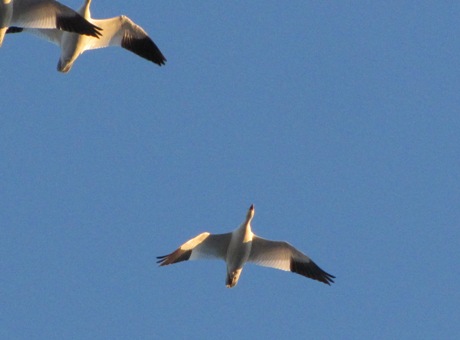
It was just about dinner time last Saturday when we received a call telling us about a big flock of snow geese in a Byron field. According to the caller, there were reportedly "at least 200" snow geese out there.
Either the caller underestimated the size of the flock or else we took a wrong turn and came across an even larger gathering of "snows."
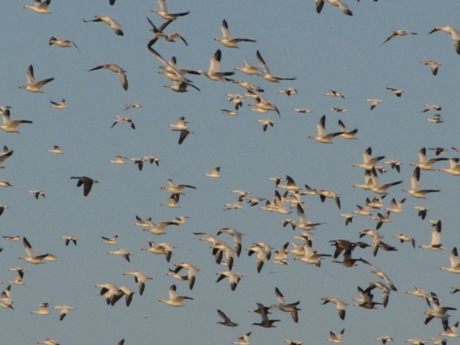
It isn't that unusual to see snow geese occasionally in Genesee County. Normally, however, if one wants to view sizeable flocks of "snowies" during spring migration they take a drive down the Thruway to Montezuma National Wildlife Refuge or one of the Finger Lakes. But this was an opportunity to view a flock of snow geese close to home.
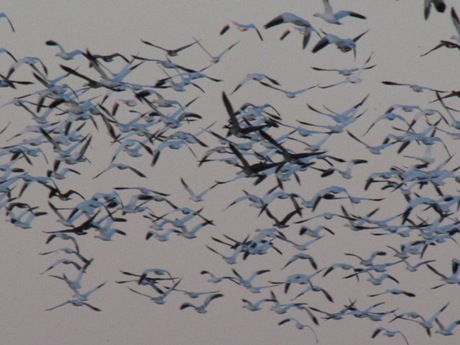
When we first spotted them they were more than a mile away, yet there was no mistaking the high-pitched chorus of snow geese on the wing. There must have been upwards of 2,000 of them with a smattering of Canada geese along for the ride. The massive flock had taken flight only moments before and from a distance the main concentration appeared as a sold band of brilliant white oscillating above the eastern horizon.
Whatever the reason for their departure from the Byron location, it was soon apparent they were not yet ready to continue on their migration northward.

Within minutes they were in Elba, and by that time the main flock had dispersed somewhat, breaking up into several small flocks, each of which still numbered in the hundreds. These flocks settled down into fields along Norton and Edgerton roads, as well as fields adjacent Bank Street Road, seeking any leftovers from autumn's corn harvest.
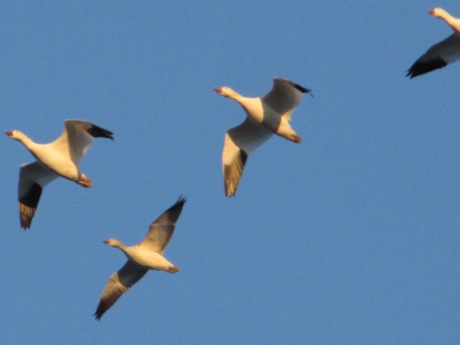
Whether migrating or simply making a temporary change in feeding locations, snow geese call the entire time they are on the wing.
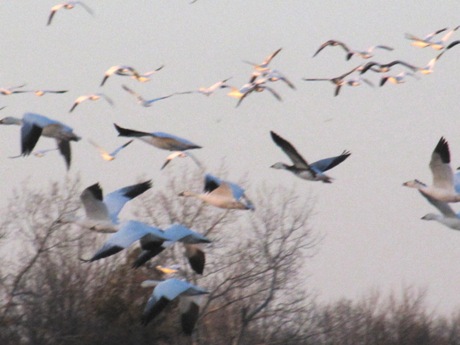
Two thousand geese may seem like a lot, but where snow geese are concerned it's hardly a drop in the bucket. The snow goose migration is one of the longest in terms of time and distance and flocks sometimes number in excess of 50,000.
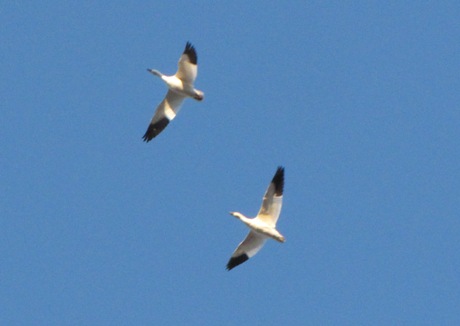
Fortunately, the snow geese are just passing through and their stopover is sure to be brief since they breed on the open tundra, well above the North American timberline -- and still a considerable way off.

They seem to have delayed their migaration as long as possible. Now, their biological clocks ticking, large flocks of Canada geese have begun to return to their breeding grounds - even if the weather isn't fully cooperating. The problem? Presently there is little open water to accommodate the thousands that have already arrived.
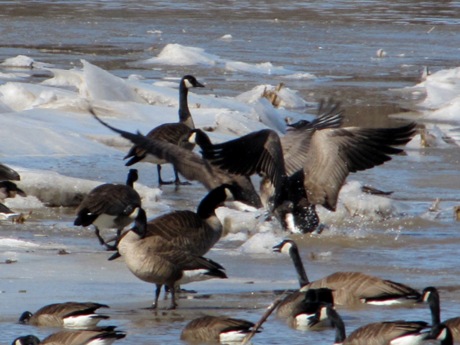
With a shortage of open water there's bound to be an occassional squabble.
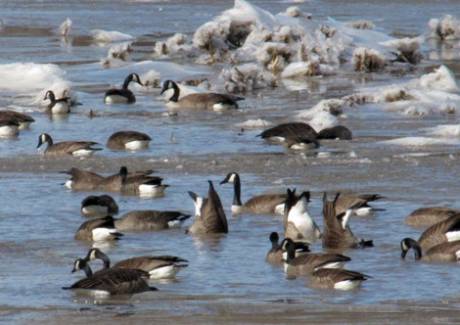
Bottoms up! The water is shallow enough for the Canada's to dabble for remnants of last autumn's corn.

Geese aren't the only waterfowl in search of open water. Note the barely visible Redhead in front of the Tundra swan.
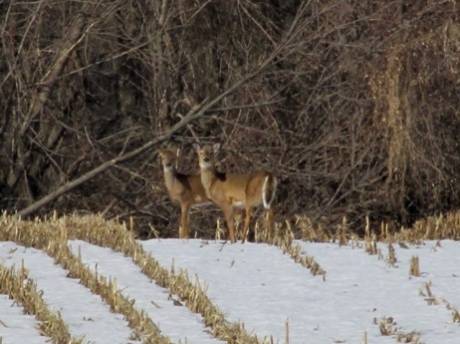
Unlike the migratory species, whitetails have had to endure a long, hard winter. Until recently these cornstalk remains were buried beneath a thick snowpack. For deer, foraging for meals the past couple of months was a lot of work.

Rebecca Grela shared this picture she took Saturday of the snowy owl at the Genesee County Airport.
Copyright © 2008-2022 The Batavian. All Rights Reserved. Privacy Policy | Terms of Service